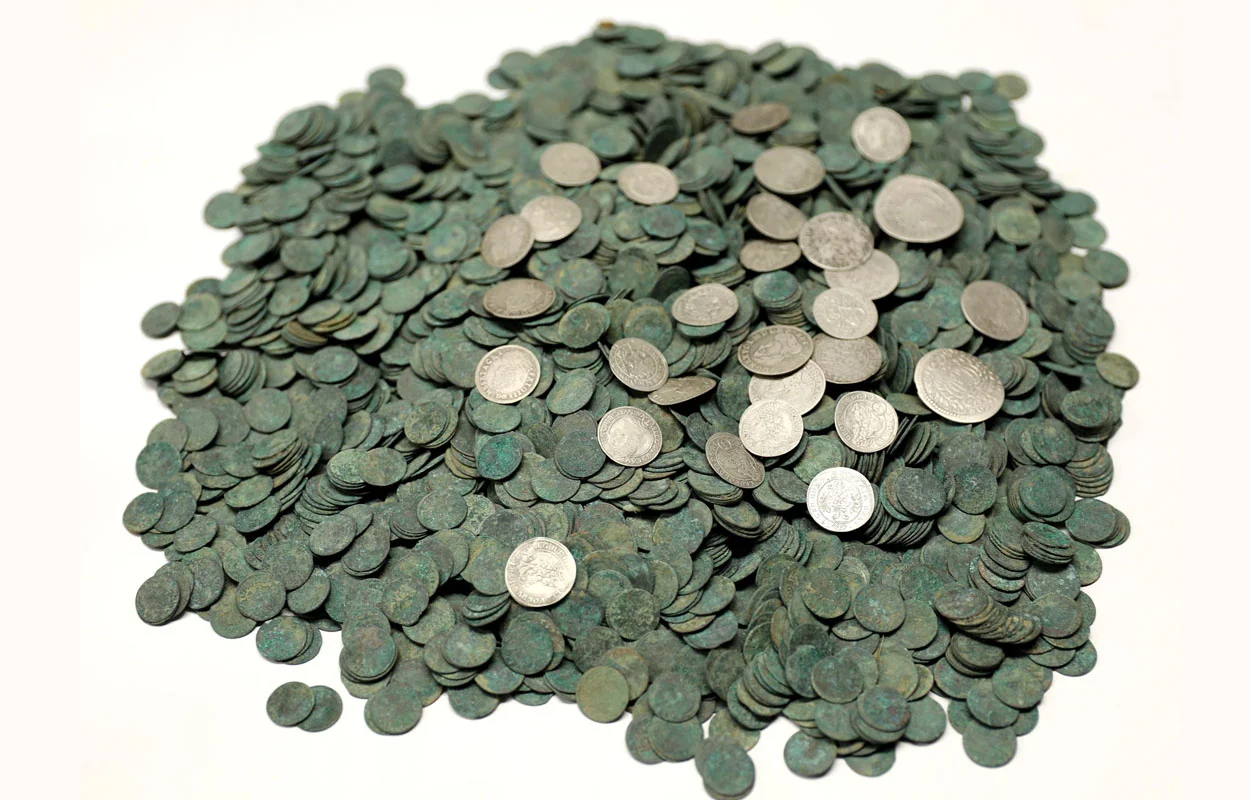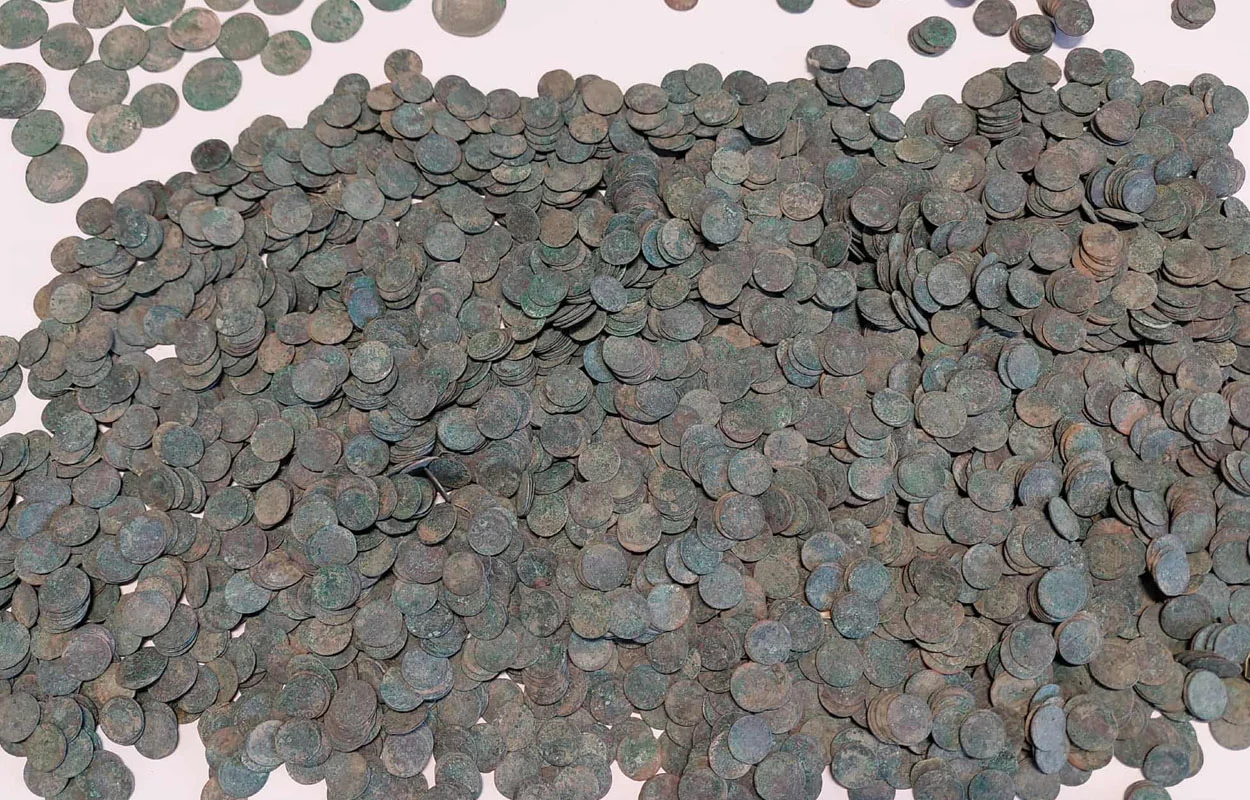A metal detectorist has discovered a significant coin hoard in a field near Zewierszczów, located in Poland’s Lublin Voivodeship.
The discovery was made by Mr. Grzegorz Panek, a member of the Hrubieszów Historical – Exploration Association “GROSSUS”.
While investigating a strong signal from his metal detector, Panek uncovered several copper coins just below the surface in a field near Zewierszczów, which quickly proved to be part of a much larger hoard numbering in the thousands.
Upon reporting the find to the conservator’s office in Zamośćm, archaeologists conducted an inspection of the site, however, no traces of further archaeological remains were found in situ.
A preliminary analysis has determined that the coins, numbering around 5,000, were minted between the years 1650–1657, during the reign of King Jan II Kazimierz.

Many of the coins are classified as “boratynki,” small-denomination copper coins named after Tito Livio Burattini, who oversaw their production for both Crown and Lithuanian mints.
Though of modest value both then and now in collector circles, their sheer quantity makes the discovery a rare glimpse into the region’s monetary circulation of the 17th and 18th centuries.
In addition to the copper pieces, the hoard contained 29 higher-value silver coins. These included six-grosz pieces issued under Jan Kazimierz, as well as coins from the reign of John III Sobieski, Frederick William of Brandenburg, Christian of Woloski, Leopold I, and Joachim VIII.
Experts believe the hoard was likely buried at the beginning of the 18th century, concealed in a canvas bag, where fragments of decomposed fabric were discovered among the coins.
The entire hoard has now been transferred to the Museum in Hrubieszów, where detailed analysis and conservation work will take place to prepare the hoard for public exhibition.
Header Image Credit : Lublin Voivodeship Conservator of Monuments
Sources : Lublin Voivodeship Conservator of Monuments





